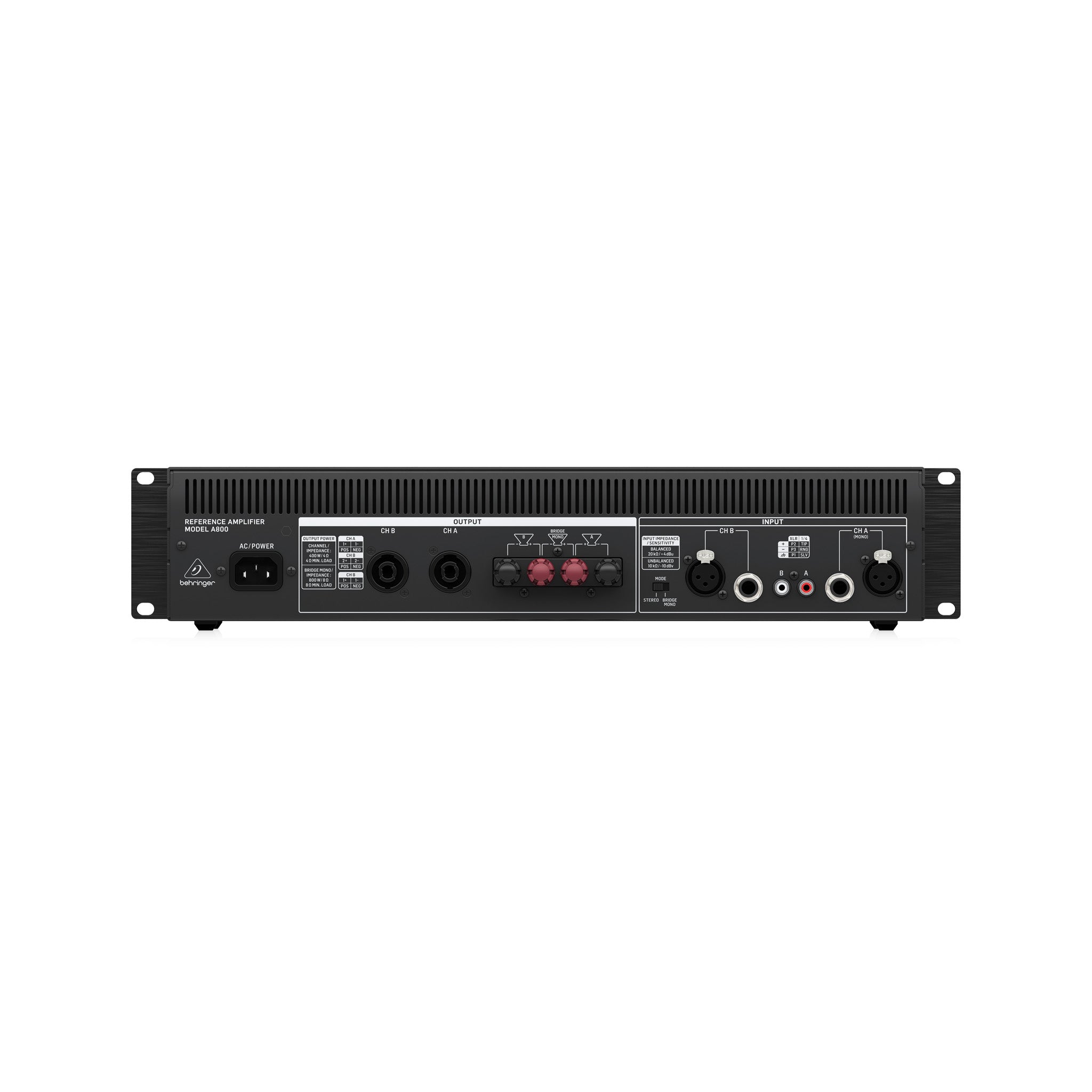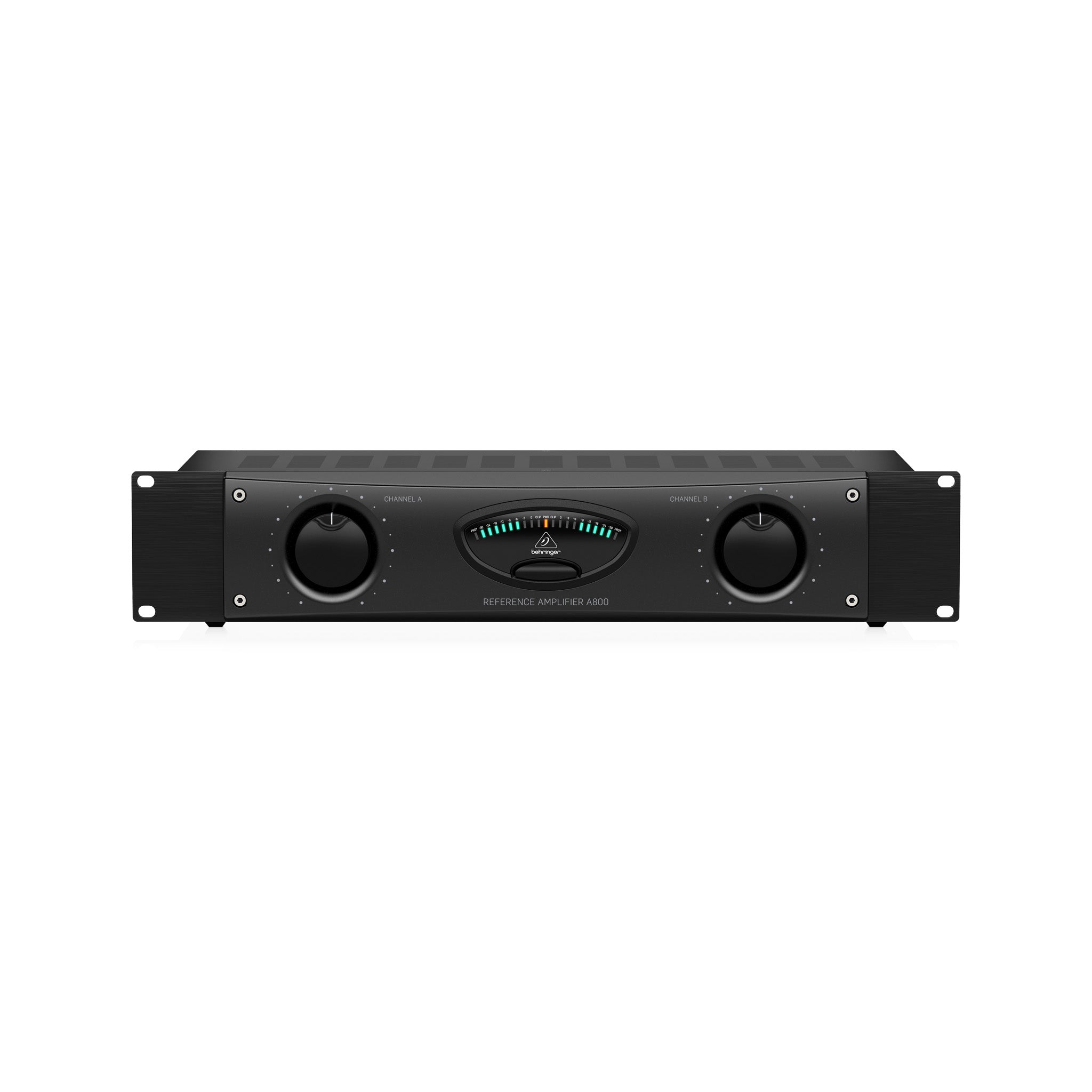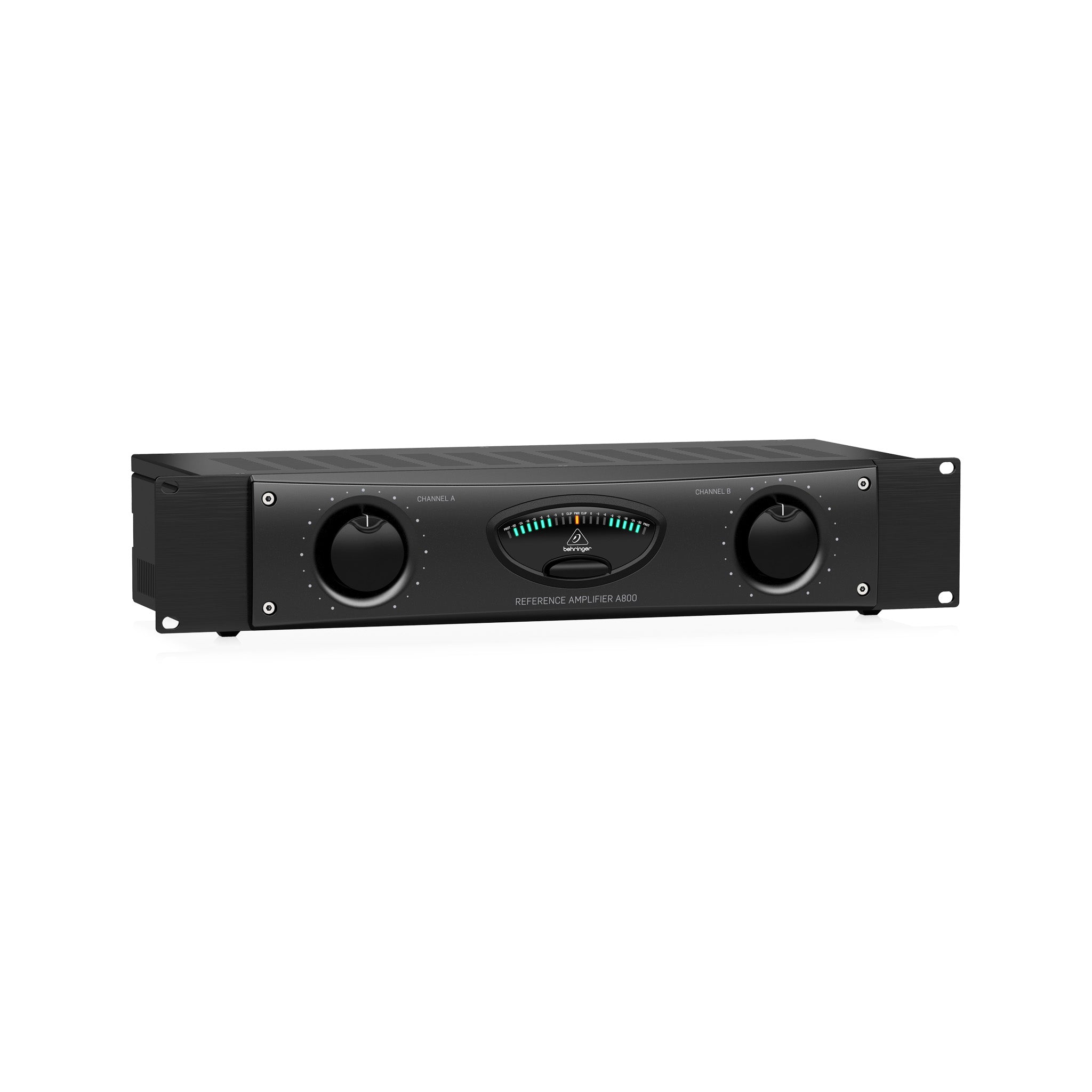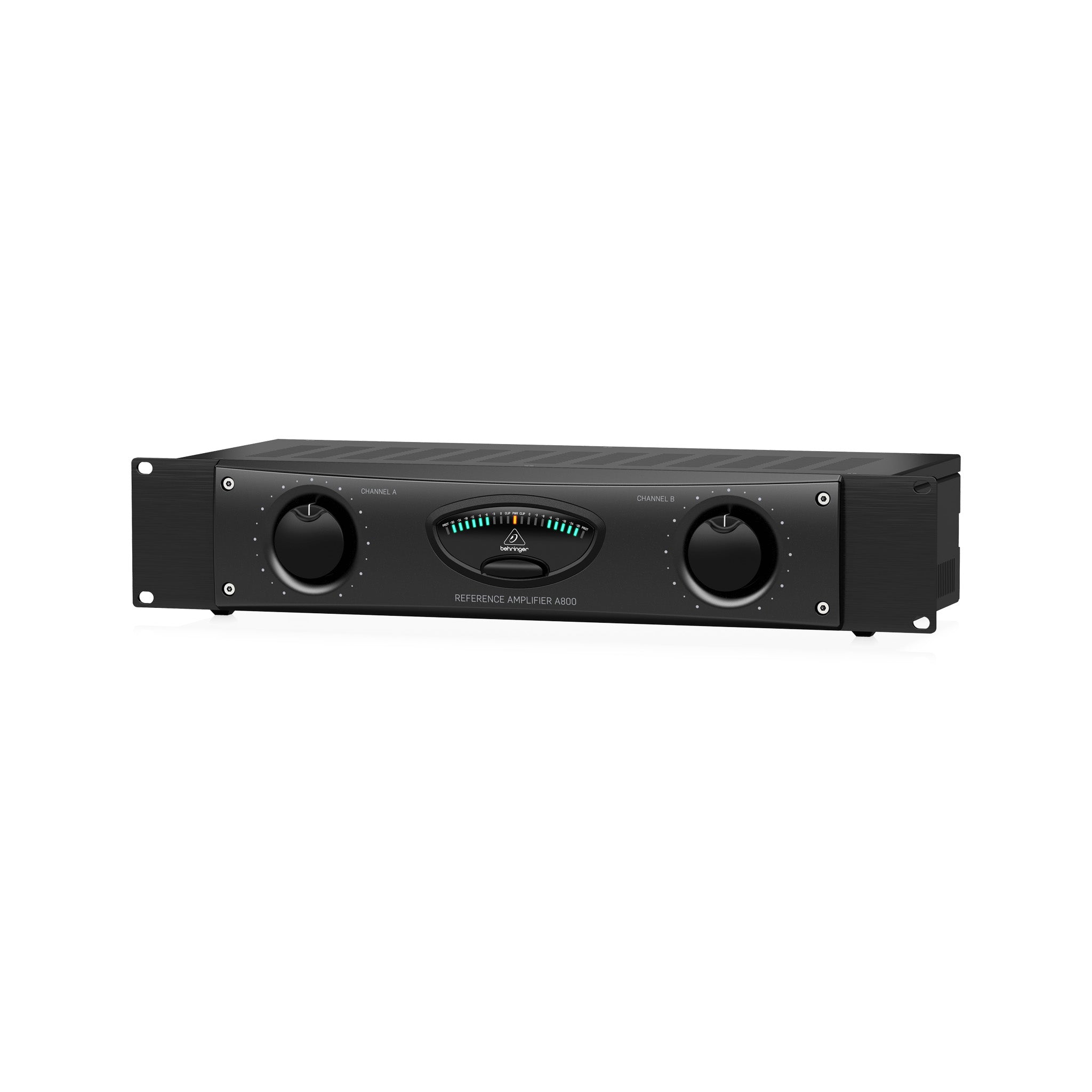The Behringer A800 Reference Amplifier is a top - notch pick for home setups, professional recording studios, and post - production suites. It offers audiophile - grade performance at an affordable price! This 800 - watt ultra - linear power amplifier delivers incredibly accurate audio reproduction, free from the distortion and artificial coloration that plague many rival products. Its servo - controlled design and high - quality components give it remarkable specs and unbeatable sonic performance.
Features:
- Ideal for recording studios, post - production, live sound, and HiFi applications.
- Outputs 2 x 400 Watts into 4 Ohms and 800 Watts into 8 Ohms in bridged mono operation.
- Low - impedance design can drive almost any passive speaker like studio monitors.
- Advanced convection - cooling ensures noiseless and stable operation.
- Precise level meter and clip indicators for accurate performance monitoring.
- Comes with input connections on balanced XLR, 1/4'' TRS, and RCA connectors.
- Speaker outputs on professional twist - lock and binding post connectors.
- Each channel has independent DC, LF, and thermal overload protection for amplifier and speaker safety.
- Ultra - efficient switch - mode power supply for noise - free audio, great transient response, and low power consumption.




Using the Behringer A800 is easy. First, connect your audio source to the input connectors. You can use balanced XLR, 1/4'' TRS, or RCA connectors depending on your source. Then, connect your speakers to the speaker outputs using the professional twist - lock or binding post connectors. Turn on the amplifier and adjust the level using the level meter as a guide. Make sure to keep an eye on the clip indicators to avoid overloading.
When it comes to safety, the amplifier has independent DC, LF, and thermal overload protection on each channel. But it's still a good idea to avoid overheating the unit. Don't block the ventilation area as the advanced convection - cooling system needs proper airflow to work effectively.
For maintenance, keep the amplifier clean and dust - free. You can use a soft, dry cloth to wipe it down. If there's a lot of dust inside, you might want to use compressed air to blow it out gently. And always make sure to turn off the amplifier and unplug it from the power source before any cleaning or maintenance work.